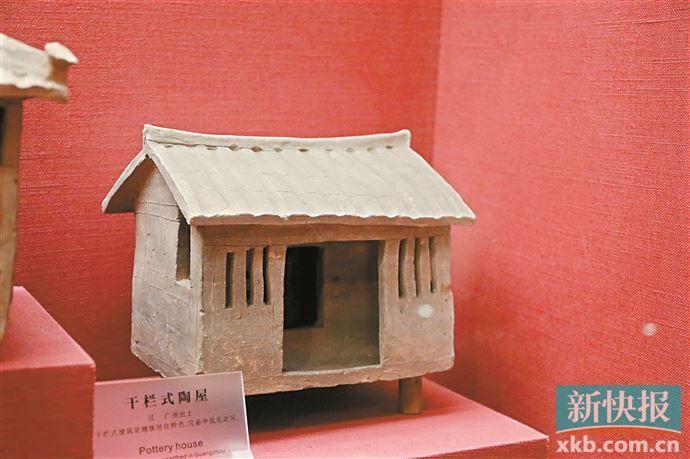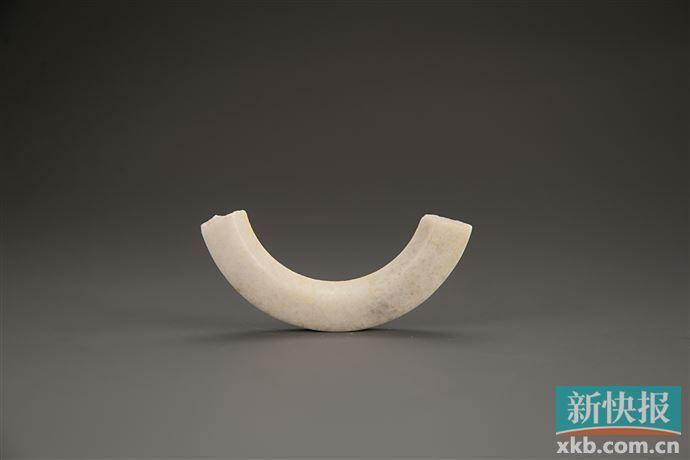
On August 16th, a press conference was held at the archaeological site in the southwestern part of Tangcun Village, Longhu Street, Huangpu District, Guangzhou, to announce significant new discoveries from the second phase of the excavation at the Gancaoling site .

Zhang Qianglu, Director of the Guangzhou Municipal Institute of Cultural Heritage and Archaeology , explained that the Gancaoling site is currently the most significant late Neolithic site in Guangdong in terms of the number of tombs uncovered. The archaeological excavations and research at Gancaoling and surrounding sites are crucial for understanding the origins of Guangzhou and for reconstructing the picture of late Neolithic civilization in northeastern Guangzhou. Notably, during this period, there may have been stilt houses in the Lingnan area.
The five groups of postholes revealed in this excavation are suspected to be related to stilt houses used for living. These postholes are later in stratigraphic sequence than the tombs and are mainly found in the western part of the Gancaoling site, indicating that the site was occupied for a considerable period and that there may have been functional differences over time. The large number of tombs and their near-complete exposure at Gancaoling provide invaluable primary data for studying the scale of Neolithic settlements, social complexity, and historical development in the northern hilly areas of the Pearl River Delta.

The China-Singapore Guangzhou Knowledge City , where the Gancaoling site is located, is in the valley between the Liuxi River and the Zengjiang River. It is one of the earliest areas of human activity in Guangzhou, with rich underground artifacts, especially from the pre-Qin period. Over the past decade, the Guangzhou Municipal Institute of Cultural Heritage and Archaeology has conducted extensive archaeological surveys and excavations in conjunction with the development of Knowledge City. They have uncovered numerous significant early sites such as Lanyuanling , Beitouling , Chaling, Shaling, Matouzhuang, Zhuyuanling, and Huogaidingling . Excavations have revealed ancient tombs, ash pits, and cellars from the late Neolithic to the Nanyue Kingdom of the Western Han Dynasty , as well as a large number of artifacts, including pottery and jade objects . These findings provide crucial evidence for constructing the archaeological cultural sequence of the late Neolithic to the early Western Han Dynasty in Guangzhou and the Pearl River Delta and also offer a solid foundation for the ongoing and deepening of the early Lingnan exploration project .
Source :Yangcheng Evening News
再现岭南先民智慧:新石器时代晚期或有干栏式建筑
8月16日,“广州黄埔甘草岭遗址二期发掘又获重要发现”新闻发布会在位于广州市黄埔区龙湖街汤村西南部的遗址现场举行。
广州市文物考古研究院院长张强禄介绍,甘草岭遗址是目前广东地区揭露墓葬数量最多的新石器时代晚期遗址;对甘草岭遗址以及周边遗址的考古发掘及研究,让我们对“何以广州”答案的寻求、对广州东北部新石器时代晚期文明图景的勾勒,有重要意义。值得一提的是,在这个时期,岭南先民或者已经拥有干栏式建筑。
本次发掘揭露出的5组柱洞遗迹,推测与生活居住的干栏式建筑有关,层位关系上要晚于墓葬,主要分布于甘草岭遗址西部,表明遗址的年代延续有一定时间,且功能分区上早晚可能存在一定的差别。甘草岭遗址墓葬数量众多、几乎全面揭露的墓地,对于研究珠江三角洲北部丘陵山岗地带新石器时代晚期的聚落规模、社会复杂化程度、历史发展进程等都是不可多得的第一手资料。
甘草岭所在的中新广州知识城地处流溪河流域与增江流域之间的河谷地带,是广州地区人类活动较早的区域,地下文物尤其是先秦时期遗存埋藏丰富。近十多年,广州市文物考古研究院配合中新广州知识城的建设开展了大量的考古调查勘探和发掘工作,先后发掘了榄园岭、陂头岭、茶岭、沙岭、马头庄、竹园岭、镬盖顶岭等十余处重要的早期遗址,清理了新石器时代晚期至西汉南越国时期古墓葬、灰坑、窖穴等遗存,出土了大量的陶器和玉石器等文物,为构建广州地区乃至珠江三角洲地区新石器时代晚期至西汉初期的考古学文化谱系提供了重要的实证材料,也为早期岭南探源工程项目的持续推动和深化实施提供了坚实的基础。
文、图|新快报记者 许婉婕 潘玮倩 通讯员 穗文考
译|林佳岱
英文审校|赵凡
-
CCvlog | Friends of the Chinese White Dolphin'Forest' on the Sea
2024-08-18 13:22:48 -
Nine Guangzhou athletes set to compete in Paris Paralympics
2024-08-17 23:53:41 -
2024 South China Book Festival and Yangcheng Book Fair kick off
2024-08-17 23:53:42 -
The 2024 fishing season commences with a flourish
2024-08-17 23:53:41






